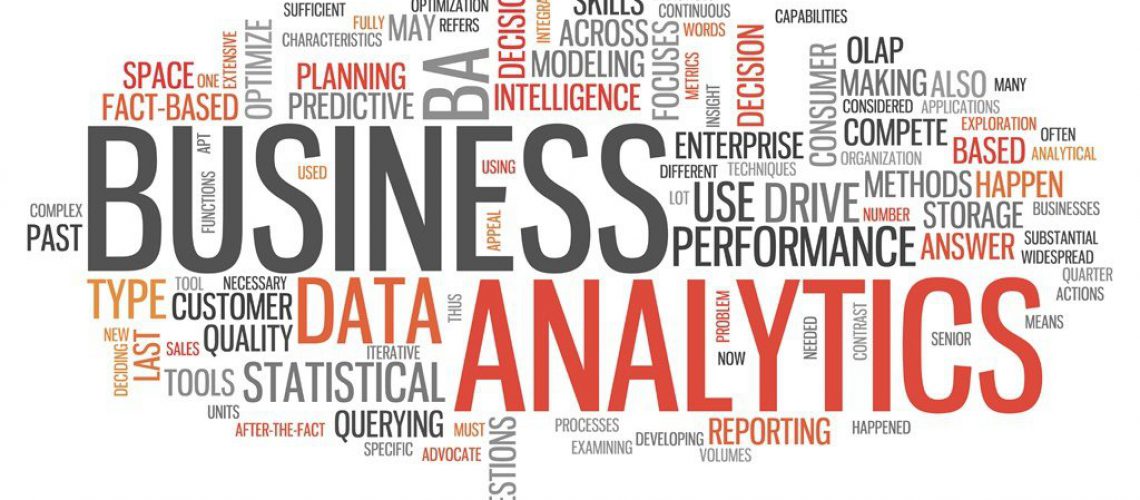In the words of my favorite musical, The Sound of Music, “Let’s start at the very beginning, a very good place to start.”
Business Intelligence analysts confirm that adoption is still not what we anticipated it to be. Recently I read a statistic that stated 64% of business users still make decisions on “gut” and not fact-based information. Have we progressed into Business Discovery, leaving behind traditional BI? With the pace of mobile swirling around us all, have we really adapted our BI strategies to incorporate mobile? When I refer to starting at the very beginning, it refers to a form of self-reflection. If we are to truly engage successfully in any flavor of Business Intelligence, we must review the basic information needs of our organization.
The Business Intelligence to Performance Management to Business Analytics progression is still about solving one big challenge for most enterprises: How do we leverage the information we have – information about our markets, our suppliers, our customers, our employees, etc., and leverage that information to make us a better performing company? Adoption of the technology, the processes, and the people to plan and implement these solutions, is still a journey. The most successful companies embrace this journey and see it as part of their standard business practice. We have seen companies embrace Business Analytics, and weather the economic storm much better than their competitors – if their competitors made it at all. This “win” for an organization really is that powerful.
Businesses are still gathering enormous amounts of data – and now we even have a fancy name – “Big Data.” Business users are still churning through those enormous amounts of data, and yield tremendous value from their BI reporting, query, dashboard, and scorecard solutions. The benefit of having this information available to the business user is so that effective and accurate business decisions can be made, which gives clear advantage to the one who masters these concepts and processes first (“first-mover advantage”). Now enter the idea of analytics. BI has historically given us analytics capabilities. After all, that is why OLAP was born, and we all fell in love with the ease of the “slice and dice,” “drag and drop,” and “drill down” function. But business is different now – financial crises, economic challenge, and the ability to keep up with the emerging technology to address these impacts on our business, makes our desire to dig deeper and learn more, quicker, better, faster and even more insatiable. Let’s face it, analysts need to be able to identify trends, predict performance outcomes, and stay ahead of their competition to survive. Those who leverage the use of Business Analytics successfully will win that battle, and their companies will outperform. Those who don’t are left behind.
Let’s break down consumption of “data”…
Reporting – it is still needed!
A typical consumer of analytical reporting is a business user who prefers well-formatted, regularly delivered reports that provide some guidance on what areas need attention. These users typically need a “top-down” view of their functional area of the business- product performance, customer revenues, etc. This user may also want to drill through to related reports to gain additional insight or detail, such as the specific product lines performing below expected or forecasted levels. A business user of analytical reporting typically wants to operate autonomously from IT, in a “self-service” fashion. For the user who needs analytical reporting, the reporting environment may be delivered from a multi-dimensional source, which gives the flexibility of analytic reporting and drill function, and enables IT to control what this user should or should not see (respecting security, of course!).
Analysis – typically reserved for the more sophisticated user – today’s business discovery tools make this easy peasy!!
In most cases, just reporting is not sufficient for this user (typically a business analyst). They want more freedom to explore the information, for example, viewing performance over different time horizons, as well as multiple or different perspectives of the same information to confirm hunches or theories. Every organization has these users, and in some cases, a large number of them. In clients without a standard Business Intelligence platform, we find that these users invariably resort to Excel to “mash up” and manipulate data exactly the way they want to. But – we are challenging the very controls of our organization by making Excel our analytics platform.
We assess that users who have more demanding analysis needs have (likely) been dumping information into sophisticated spreadsheets that demands hours of manual manipulation. Those users realize capable business insight to things such as top and bottom analysis and are responsible for delivering answers to complex questions within their enterprises.
The solution – trust these users with analytics or business discovery solutions. They are typically smarter than you think! Given a data model that will protect the integrity of the data and business rules and a solid security model that assures data integrity, most analytic users are fluent in the song of data…..and given the right tools – they can really sing!
Hmmmmm, but “What If” we need a little more than just analytics?
When businesses want to determine the impact of a new business approach by evaluating alternate business scenarios, they require a BA capability called Scenario Modeling. In Scenario Modeling, we introduce the capability for business users to develop “what-if” analysis on the fly. It gives us the flexibility to model scenarios against large data sets, re-organize, and compare scenarios within our business. For example, a user may wish to understand the impact to their customer base if a price increase is introduced on a product within a specific product line (“sensitivity analysis”). What if we increase pricing by 10 percent, 20 percent, etc.? How many customers are affected by that price increase in our market?
Scenario modeling capabilities provide information that is highly strategic to the business, and typically leveraged by fewer users than other forms of analysis. These users are looking for financial analysis, profitability analysis, etc. and are able to adjust the analysis model without having to re-load or re-request the data. The benefit to their business is real scenario comparison, based on a data model which enables analysis with what-if benefit.
Predicting our futures! Careful, we might not want to know 😉
Some/many businesses are interested in “what might be” within their data. For example, if we run an algorithm within the data, with specific criteria directing, then predictive outcomes may prevent possible mistakes. An organization looking to uncover patterns within their business, apply algorithms, mine data and text, and predict outcomes is the organization who will extend Predictive Modeling within the solution and challenge their competition with driving insight.
So – How do we start the Business Analytics Journey?
The concept of business analysis is now a mature perspective, and your options for leveraging benefit from that analysis are greater due to the flexibility of technology available in the market- But technology alone will not get you there.
Businesses that are interested in pursuing Business Analytics will expand the perspective of their business for a more “complete” view, facilitate collaboration, and respond to growing user communities and demands for faster performance to more data. The journey to successfully accomplish this task and the natural extension of BI with Business Analytics will require that an organization establish and agree on a process and solid strategy.
As companies dig through their data to look for these answers, to gain insight from enhanced analysis or reporting, it becomes clear that they need the means to understand and measure their goals and progress. But don’t be fooled – selecting some cool technology which will yield great graphs and highly formatted reports will not necessarily solve this problem. We have learned over and over again, that the tools are only part of the solution. As a matter of fact, many companies make the mistake of thinking the tools “solve all their data problems.” The single largest challenge is not the tools, infrastructure, or data- it is the people. Organizations need to ask themselves:
- Do we have the people and a culture that truly understands our business and who are willing to make fact-based (not gut-based) decisions? Fact-based decisions don’t always “feel good.”
- Do we have the process and methodology that will take what we learn from our Business Intelligence and apply that to new business decisions and process?
- Will our culture enable, embrace, and execute change?
Answers to these questions require executive input, executive direction, and a commitment to the plan for execution. More importantly, if the answer to the questions above is “no,” then save your budget, time, and sanity and don’t embark on the journey. Should that be your choice, however, one must know that your competition is likely figuring out how to make this work to gain competitive advantage through insights to their market, their customers, and ultimately, their profits.
This is a high-level view of some of the Business Analytics perspectives that organizations might consider before investing in, or changing, their BI tools selection. It is high-level on purpose, so that as you consider of the “kind” of solution, you focus on the right vehicle for delivery. John Daniel Associates is an 18 year old Business Intelligence practice. Our solutions represent the QlikView and IBM Cognos platforms. Future blogs will provide deeper technical content on both platforms – so keep bloggin’ with us!



